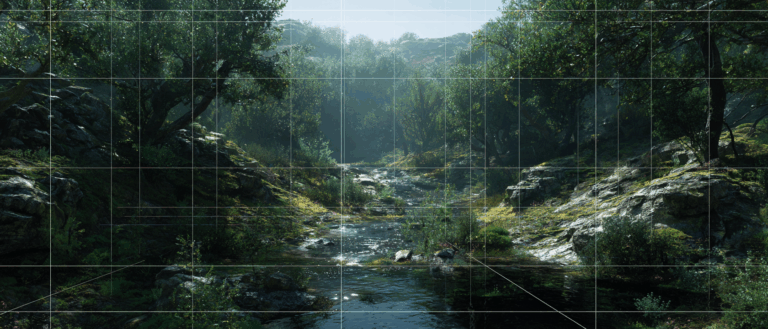Leeks Turn the Tables and Get Rich! Canadian Scholars Publish Bitcoin Price Prediction Model

Just like the stock market, the Bitcoin market is also volatile and has no rules. But recently, Canadian researchers created an artificial neural network to predict the rise and fall of Bitcoin prices and provide reference advice to investors.
For two consecutive weeks, the price of Bitcoin has continued to fall. Not only did Bitcoin fall below $10,000 on Monday, but in the past seven days, the price of Bitcoin has fallen by 27.09%.

This week's sharp drop interrupted Bitcoin's continued upward momentum this year and left investors unsure.
Recently, Canadian researchers used artificial intelligence technology to establish a Bitcoin price prediction model, saying that using this model can generate higher average returns than placing random orders.
Artificial neural network predicts the rise and fall of Bitcoin
Due to the special nature of Bitcoin, it is not like ordinary currency, has no physical form to provide value, and it is impossible to perform traditional fundamental analysis on it. Therefore, many investors want to track the so-called technical surface (geometric patterns built from historical prices and trading volumes) in order to understand and predict the future trend of Bitcoin.

But does the technical side of Bitcoin really exist?
Nikola Gradojevic, a researcher at the University of Guelph in Canada, has found that large and complex models can give good prediction results, and published a paper titled "Non-fundamental, non-parametric Bitcoin forecasting" in Science Direct, in which he described this artificial neural network (ANN) model to test the predictability of Bitcoin prices.
Paper address: (https://www.sciencedirect.com/science/article/pii/S0378437119309859)

As an alternative valuation and forecasting approach, they proposed a non-parametric model based on technical analysis. Using simple technical indicators, a feed-forward neural network was used to generate point and density forecasts for Bitcoin returns.
Specifically, the two researchers did the following two things:
1. Exploring the Possibility of Bitcoin Price Prediction
First of all, as mentioned at the beginning of the article, people have different opinions on the trend of Bitcoin. Can technology really predict it?
To address this question, the researchers proposed that if Bitcoin is unpredictable, then their model would be no better than a random walk model (which, in essence, is no better than guesswork).
So, they use the technical indicator of moving average as a predictor. A moving average is constructed by averaging the prices over a period of time (such as 50 or 200 days) and plotting it as a line along with the prices.
The rationale for using a moving average is that if the current price of Bitcoin is above or below the average price of the past 50 or 200 days, traders can expect an upward or downward trend.
As a result, their model gives some very interesting results, which show the predictability of Bitcoin prices and take into account factors such as Bitcoin's performance over time and during periods of abnormal volatility.
2. Three predictors to help ANN learn predictions
Once they determined its predictability, they used daily observations from 2011 to 2018 to create an artificial neural network with three predictors: returns, 50-day buy/sell signals, and 200-day buy/sell signals.
They also tested an artificial neural network model that included the Chicago Board Options Exchange Volatility Index (VIX) to see if stock market volatility had any noticeable impact on Bitcoin movements (Note: VIX is a theoretical index based on the S&P 500 Index that provides 30-day market expectations. Higher VIX values indicate that the market will fluctuate significantly).

Artificial neural networks operate in a similar way to the basic functions of the human brain. Their models take predictors, i.e. inputs and outputs (Bitcoin's daily price changes), and try to learn patterns from all the data. It keeps testing its patterns until it reaches an optimal point (where further testing is redundant). These advanced models form the backbone of many AI learning programs used in business and engineering.
By combining Bitcoin technical analysis and neural networks, they hope that the ANN will be able to find a pattern in the data that will allow them to more accurately predict future returns.
Experimental data show that ANN does achieve higher prediction accuracy.
The model predicts price fluctuations with an accuracy rate of 63%
Their ANN model did succeed in reducing the random walk prediction error by approximately 5% to 10% over the entire observation period. These improvements in predictions were statistically significant, indicating that predicting Bitcoin prices on a daily basis is no longer a matter of guesswork.
In addition, one of their research results showed that Bitcoin is not affected by changes in the traditional stock market, which shows that traditional market investors and Bitcoin investors are two completely different groups.
To further improve the predictive performance of the ANN, they also divided the data into four subsamples of similar time periods to further amplify market inefficiencies.

A subsample from October 2014 to June 2016 provides the best results. The isolated 200-day signal model outperforms the random walk by 43.55%. This subsample has lower volatility than the other three subsamples and is the most stable data period observed.
Essentially, the more volatile the market is, the more difficult it is to learn patterns in the data and train the ANN model.
In addition to price accuracy, they also looked at how often their artificial neural network model correctly predicted price increases or decreases. The main composite model had a prediction accuracy rate of nearly 63% during the period 2011-2018.
In other words, the average profit from trading Bitcoin using this model will be higher than placing random buy and sell orders, where the probability of making a profit is 50%.
Compared to other prediction models, this ANN model provides the most accurate and reliable prediction method for Bitcoin.
They also came to a conclusion: the historical evolution of Bitcoin prices follows a predictable trend, but this trend is speculative and is not affected by any real economy. As for the specific investment strategy, you need to run this model to know.
Investing is risky, investors should be cautious
Since its inception, Bitcoin has experienced ups and downs.
From the beginning, a programmer used 1 Bitcoin to buy two pizzas. At the end of 2017, the price of Bitcoin reached an all-time high of nearly $20,000. Then in early 2018, Bitcoin fell to a low of $9,800. After that, it has been hovering above $10,000 until it recently fell below $10,000...
Will it prosper or die? BlockBeats predicts that Bitcoin will die again, or even many times. Some analysts believe that Bitcoin will rise to $100,000 after 2020...

US President Trump, US Treasury Secretary Mnuchin, Federal Reserve Chairman Powell and some members of Congress have publicly expressed doubts about cryptocurrencies, which has also had a great impact on the price of Bitcoin.
Therefore, Justin Sun specially invited Trump to have lunch with him and Buffett to discuss Bitcoin and blockchain.
All these factors may affect the market price of Bitcoin. Can the artificial intelligence model take them into account during the prediction process?









